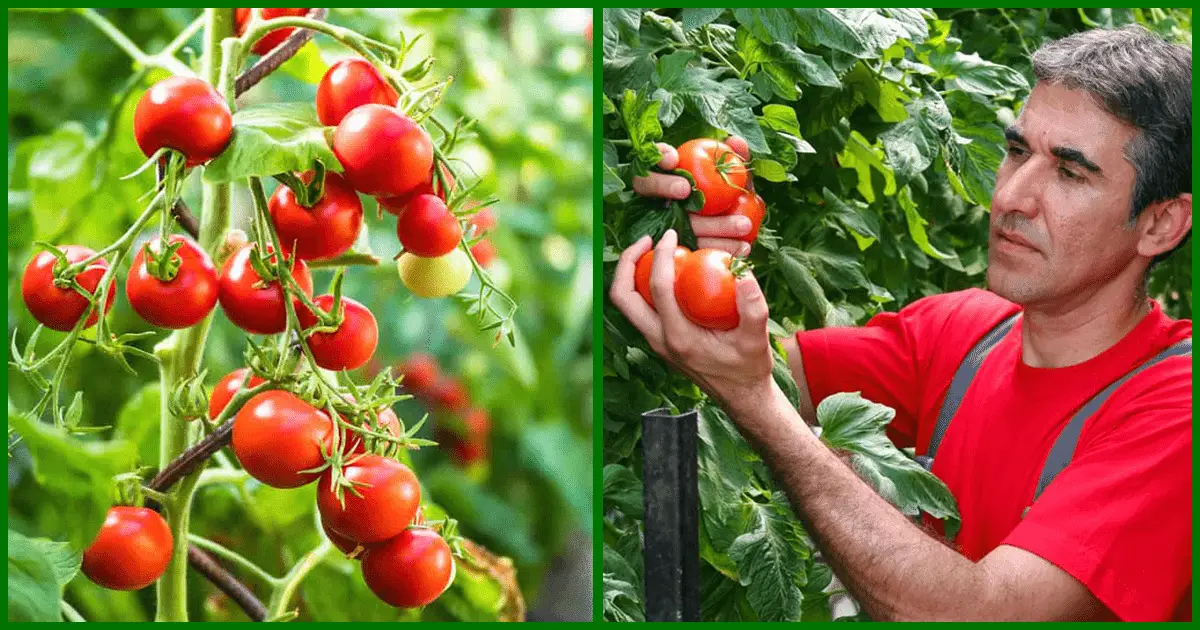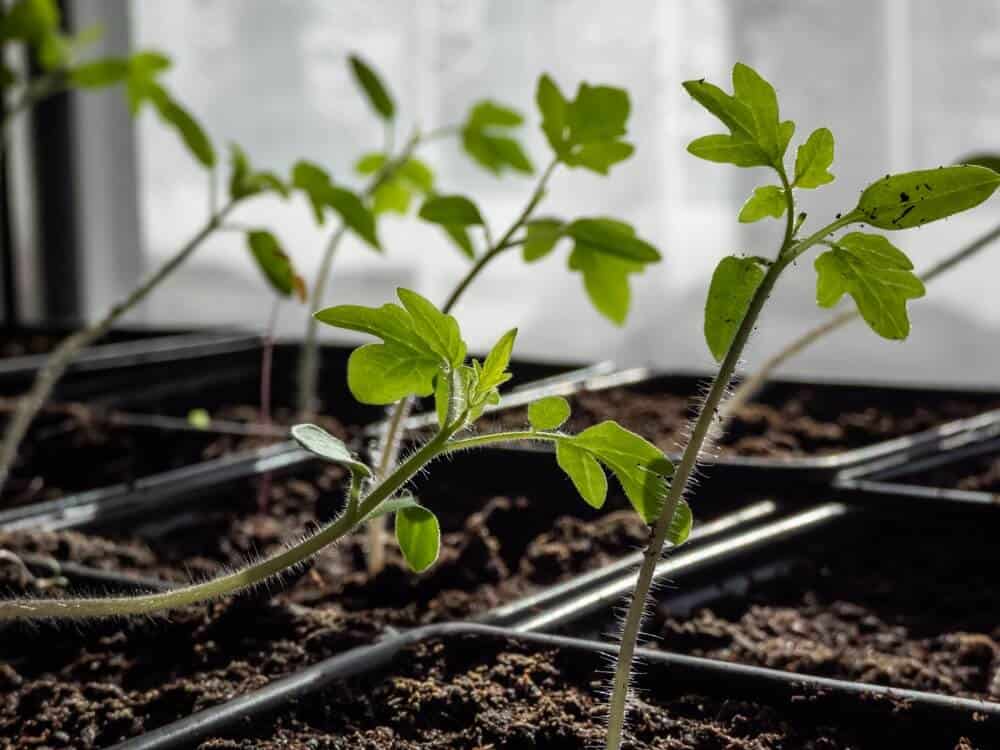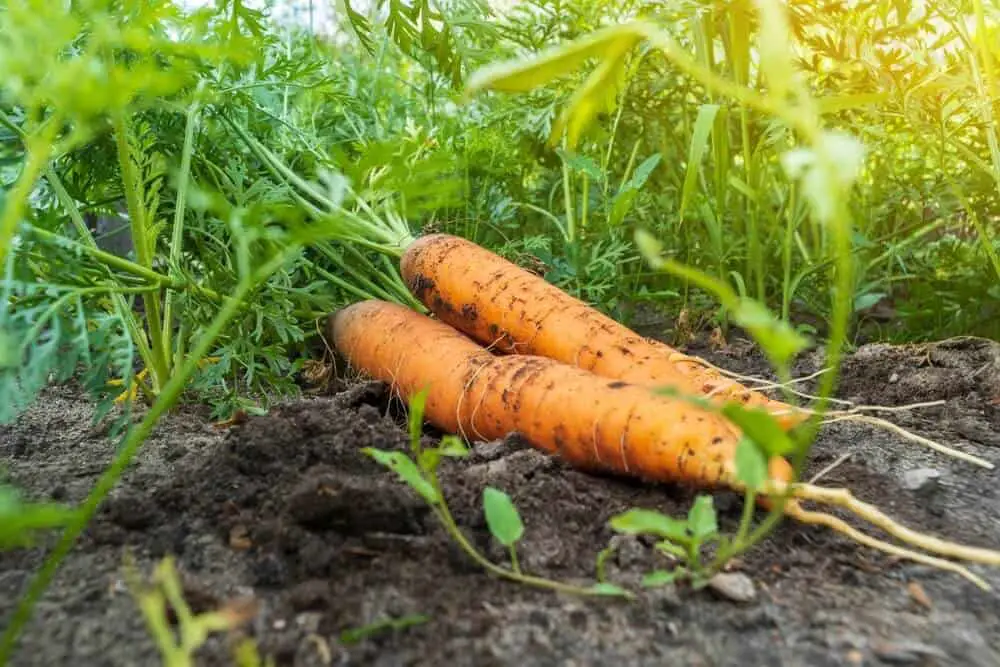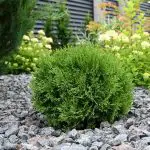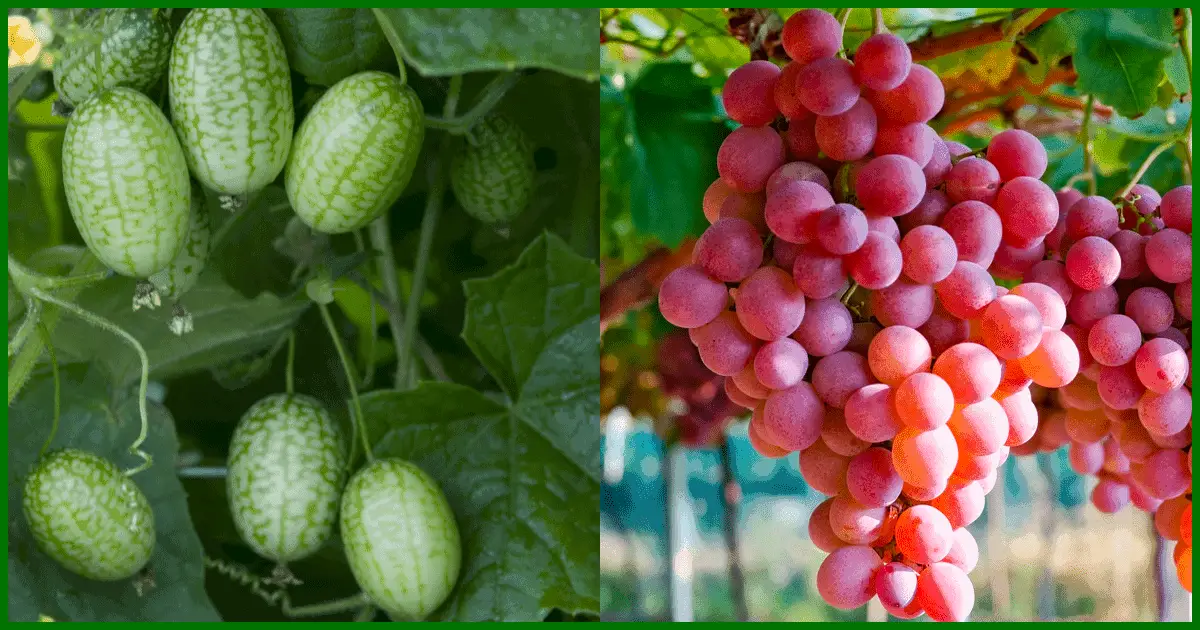Tomatoes are one of the most popular fruits to grow. With over 7,000 varieties that range in color, size, and taste, you’ll have plenty of choices depending on your preference.
Most varieties of tomato plants can suffer from the same problems. However, knowing the top 10 Tomato Growing Problems and How to Fix Them will put you in good stead as the tomato growing season kicks off.
1. Your seeds haven’t germinated
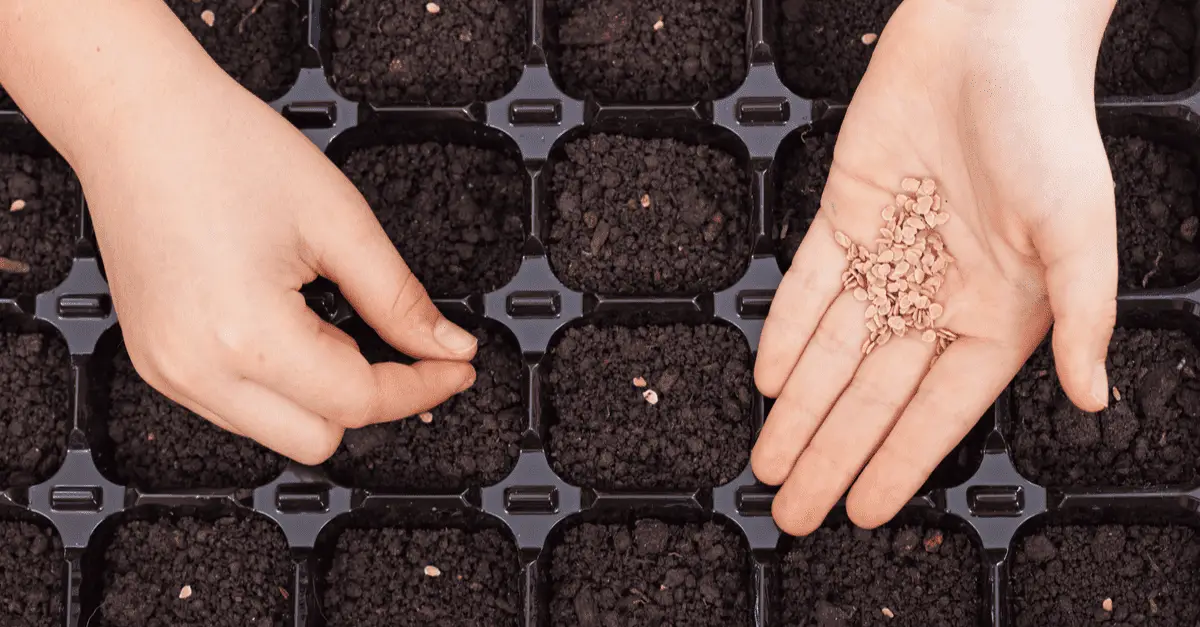
Planting your tiny tomato seeds and waiting for the glorious green shoot to emerge through the soil is one of the most exciting aspects of growing. Germination should take between 1 and 2 weeks if everything is going according to plan.
In cooler temperatures, your seeds may take a little longer to sprout, but what happens if you go past the 14 days and there is still nothing to show for your hard work?
A few things could be the problem here, and they’re all to do with the soil; either it’s too cold, too hot, too wet, or too dry. Any of these will stop growth before it’s even started.
You can fix this problem by ensuring the soil temperature is between 65 and 85 degrees Fahrenheit. Make sure to keep your soil moist, watering often, but always allow plenty of drainages.
Lastly, make sure you’re seeds are within their use-by date. In the right conditions, seeds will store for around five years, but they’re unlikely to germinate after that.
2. Your seedlings are tall and lanky
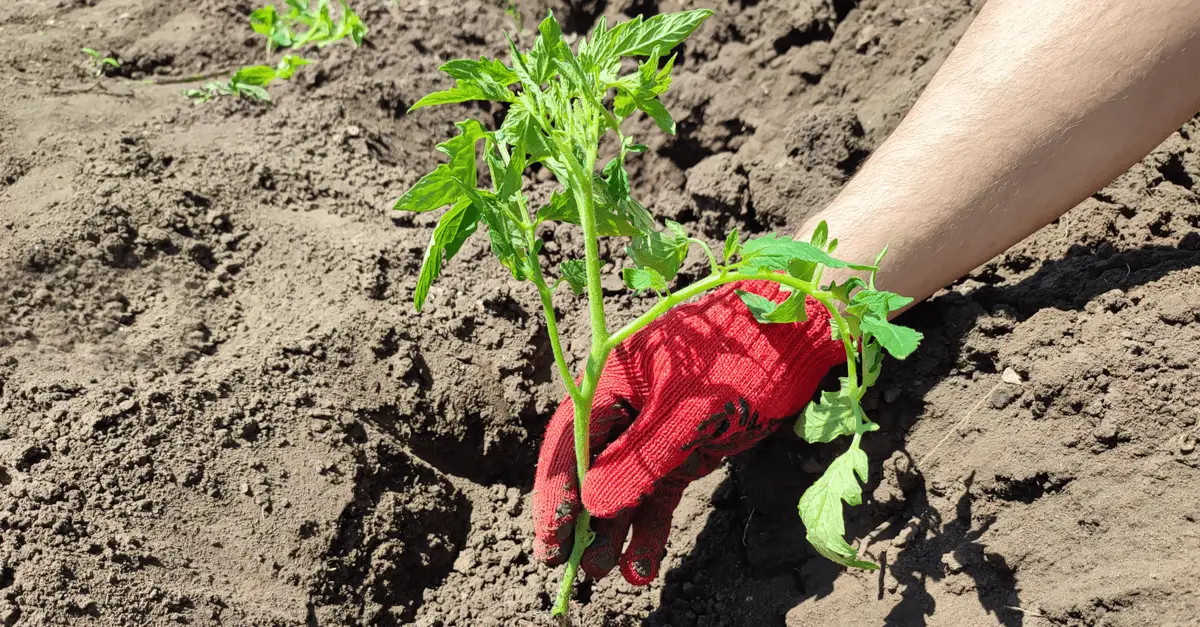
Once your gems have poked their little heads out of the soil, you can enjoy watching them grow. A healthy tomato shoot should look robust and grow evenly, with 4-5 offshoots of leaves.
If your plants are looking tall and thin, they’re not getting enough light and are growing taller, quicker to try and find it.
A tomato grown in natural light should have at least 6-8 hours of full sun a day. Those produced under Compact Fluorescent Light (CFL) will need around 16 hours a day, placing the light 4 inches above seedlings to make sure they all benefit.
3. Your seedlings are wilting
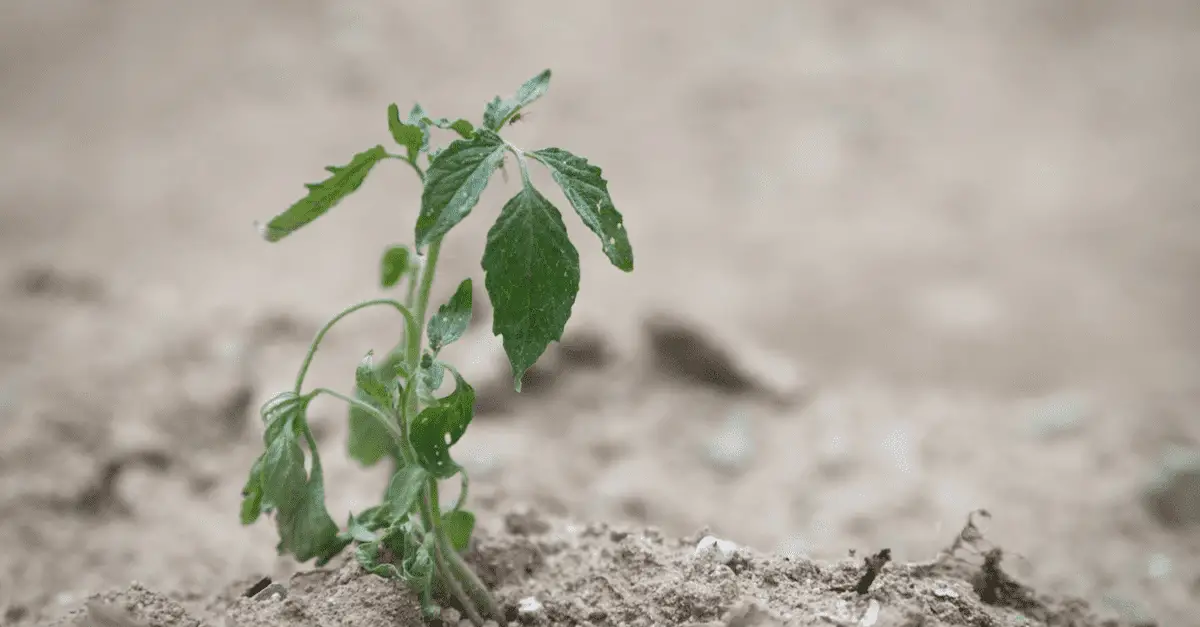
When the leaves of a tomato plant start to wilt, it is a sad sight. The plant is giving up! As well as drooping, the leaves may also appear thin and flat.
Luckily, the most common cause of wilting leaves is dehydration – not providing enough water. The even better news is that it’s a speedy fix, and the leaves will soon perk up again after a good soaking. Remember to water the soil around the stem instead of the plant itself and avoid watering too quickly.
Tomatoes grown in pots will need more water than those in the ground. When water runs freely from the drainage holes in the container, you’ll know it has a sufficient amount.
Tomatoes grown in the ground will retain more moisture, but in the height of summer, they will need a decent soaking 2-3 times a week.
4. Your plant is purple
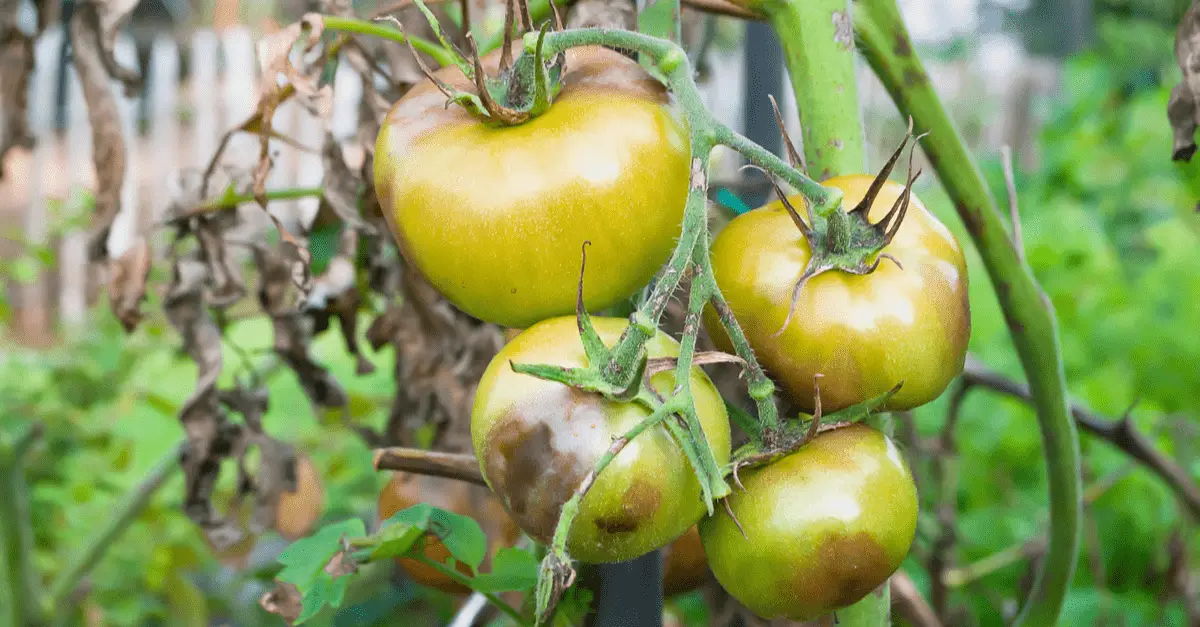
You can expect your tomato plants to have a particular purple hue to the stem and leaves. However, it is not good if your plant begins to turn more purple than green.
The most common cause for this color change is a nutritional deficiency in potassium or phosphorus. The tomato plant needs potassium to encourage photosynthesis, and plants without enough phosphorus will also suffer from stunted growth.
There are two main fixes to this problem. The first is to use compost rich in potassium and phosphorus and top them up with a liquid fertilizer every 1-2 weeks when the fruits start to appear.
The second is to make sure you don’t plant your seeds or seedlings in cold soil because it is harder for them to absorb phosphorus.
Although the color of your plant should return to normal once the ground warms, they are likely to remain smaller and mature slower.
5. You can see white leaves
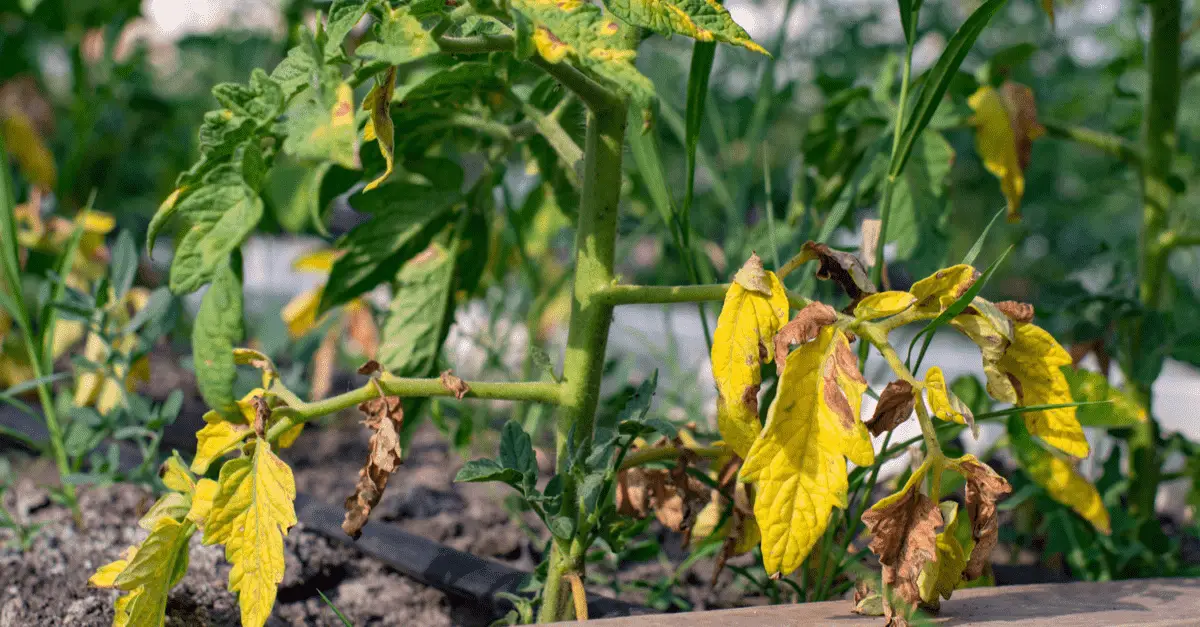
There are two main reasons why your tomato plant may have white leaves.
The first is that your plant has developed a fungal infection. The cause of this is most likely to be overwatering.
Soil that is constantly warm and sodden provides the perfect environment for fungal spores, which then causes the leaves to turn a blotchy white.
You can fix this problem with a fungicide; however, in spraying toxic products, you’ll need to consider the adverse knock-on effects of other wildlife.
A homemade alternative is to mix one teaspoon of baking powder into 2 pints of warm water. Mix in a dribble of dish soap and use a spray bottle to cover your plants.
The second possibility of white leaves is that your seedlings have been exposed to the harsh sun too quickly.
Seedlings that have initially been grown indoors need time to adjust to being outside, so when it is time to move them out, begin with cloudy days. Then, gradually expose them to an hour of full sun, allowing them to harden off.
6. Blight has invaded
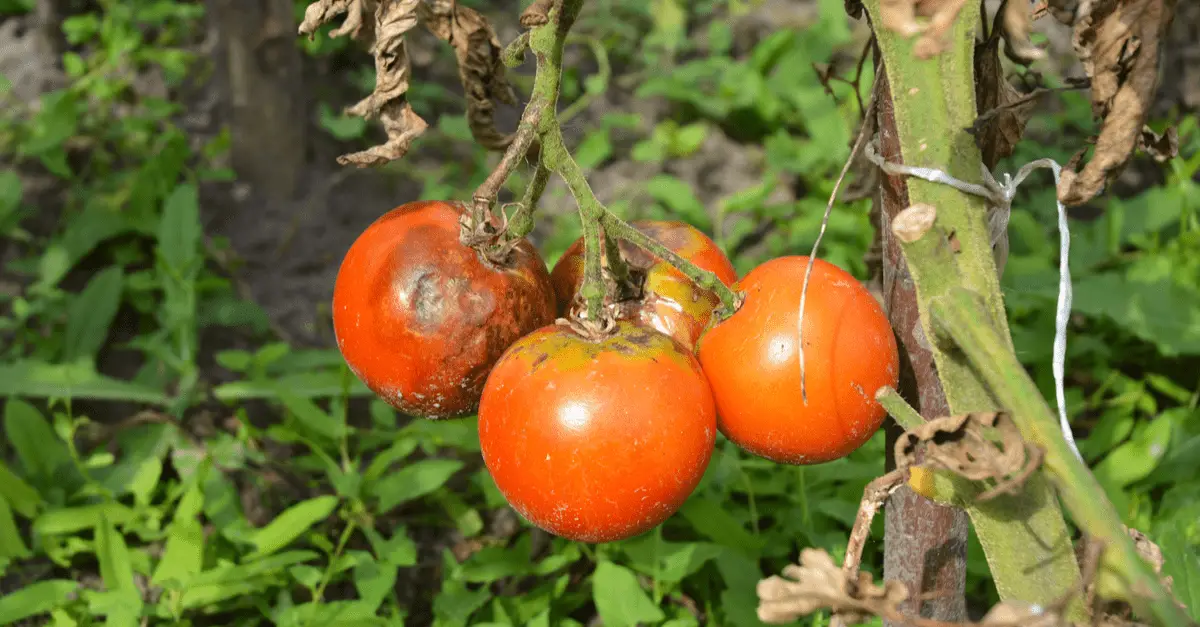
Blight is another fungal infection that tomatoes are particularly susceptible to and can easily ruin your whole crop.
Scientifically known as Phytophthora infestans, blight begins with dark sunken spots on the tomato fruit that quickly spread to the leaves. Anyone growing tomatoes fear it because it’s almost impossible to save the riches once it takes hold.
The main two ways blight spreads are in the wind and through splashing water.
You can no longer buy copper fungicides previously used to destroy blight, and so to tackle this problem, this is your plan of action.
As soon as you see any blight symptoms, remove the affected areas immediately. Strip any foliage, stems, and fruits and burn them or bury them at least 1m below the ground.
If you’re fortunate, you may have stopped the fungus in its tracks; however, if more of your plant is affected, it’ll end your crop.
Here are some ways you can prevent the onset of blight:
- Water your plant’s soil and not the leaves; this will avoid the infection spreading with splashing water.
- Space your tomato plants at least 45cm apart to avoid overcrowding and damp conditions to stimulate fungal spores.
- Rotate your crops, particularly if you’ve experienced blight before. It will almost certainly reinfect your crop if you plant in the same soil the following year.
7. Your tomatoes have cracked
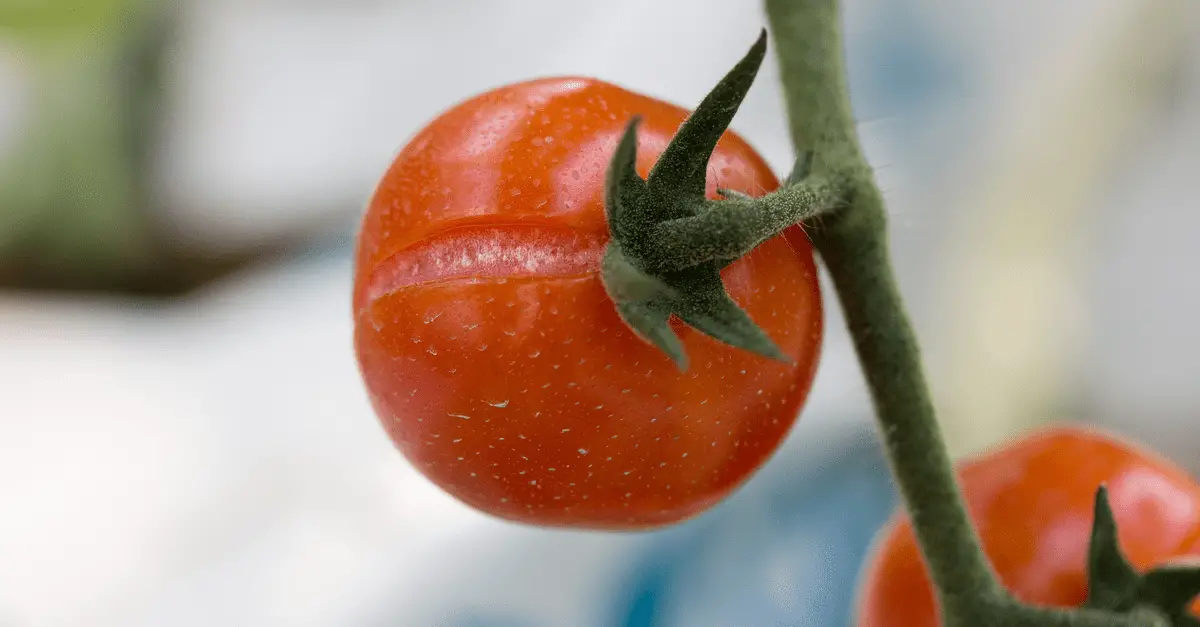
One of the most frustrating problems with tomato plants is cracked tomatoes. You’ve managed to avoid all other issues, and at the last hurdle, your sweet fruit splits and, in some cases, is spoiled.
Tomato skins will break when the skin does not expand quickly enough for the ripening insides.
The main problem with these openings is that they allow insects and diseases to sneak in and ruin them completely.
The likely cause of cracks is profound changes in watering. Heavy downpours or overwatering, followed by a spell of drought, will do this, and so to avoid it, there is a simple solution- consistent watering.
8. Your fruit is not ripening
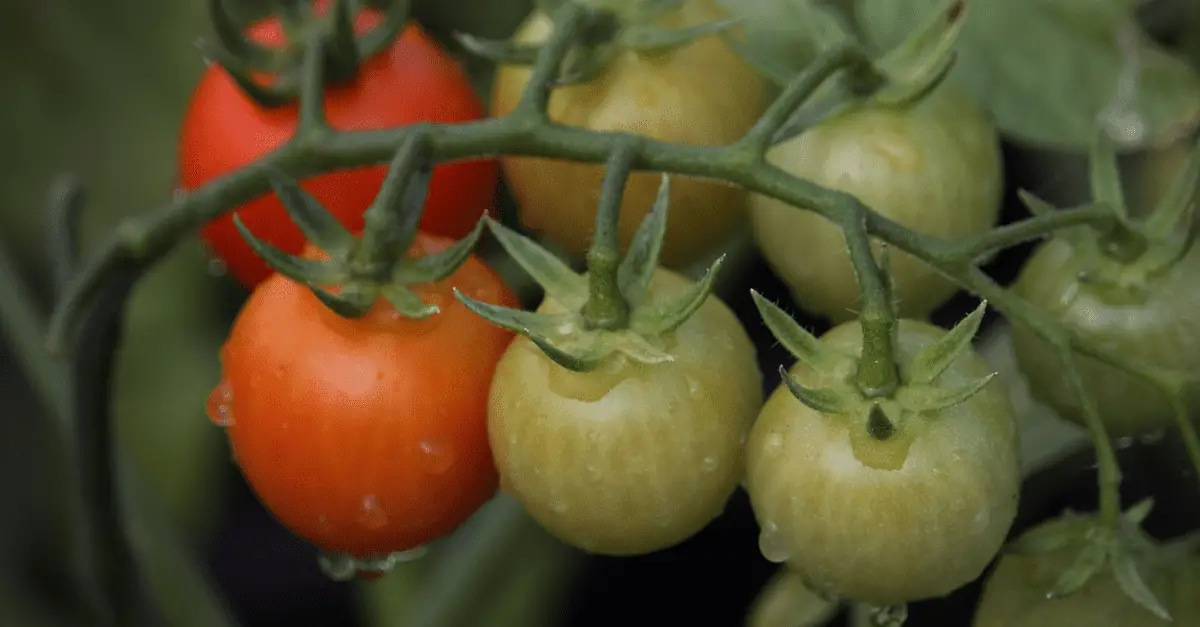
Sometimes, everything seems to be progressing smoothly; the foliage is a healthy green, and the little green spherical jewels are just beginning to form.
But then everything stops, and the color change isn’t happening. Your stubborn tomatoes are stuck on green. Why?
Interestingly, one of the main reasons for this is that you’ve cared for them a little too well, and it’s time to back off.
Overfeeding them, particularly giving them too much nitrogen at this stage, will stop them from fruiting. You only need to fertilize your crop once or twice throughout the season.
It could also be that your growing environment is too hot. For the fruit to ripen, two hormones – lycopene and carotene – are responsible, and if the temperature is about 85 degrees, they just won’t kick in.
9. The fruits are so small

It may be the case that the tomatoes developing on your vine, and possibly even your crop, is just not growing as quickly or to the size you expected.
The most common reason for this is that your plant is feeling stressed. Maybe it’s too hot, too dry, has an insect invasion, or a disease in the worst cases.
In this situation, rather than sending its energy north into growing sufficiently and producing an abundance of fruit, your plant sends everything it’s got south to the roots, hoping to survive whatever is happening up the top.
It could also be that you have overcrowded your plants, have fed them a little too much nitrogen, or there aren’t enough pollinators in your area.
There is no quick fix to this problem, but you can make sure you grow tomatoes in their optimum conditions, with plenty of space, the right temperature, and consistent watering.
If you can tick this off the list, observe your plant for signs of anything more sinister, such as disease or pests.
10. Your tomatoes haven’t formed properly
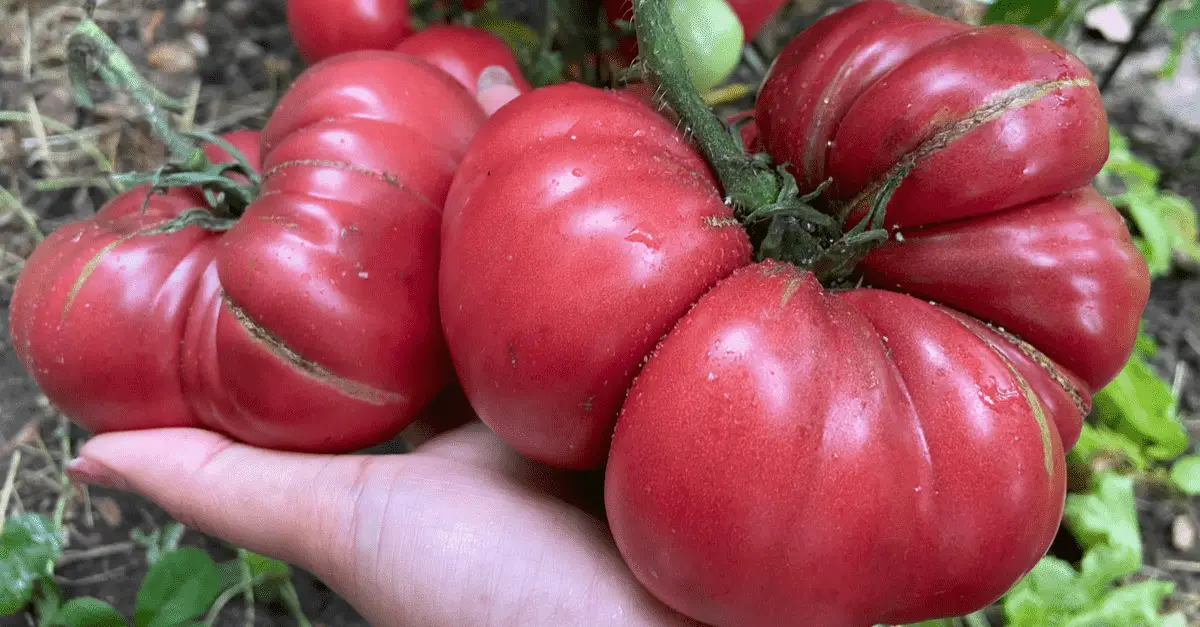
Catfacing is a problem that affects many varieties of fruit, including grapes, peaches, and apples. The problem is a physiological one that causes the fruit to deform as it grows and is aptly named because its features often resemble our feline friends. Larger varieties of tomato, such as heirloom and beefsteak, are more affected than smaller ones.
Scientists don’t fully understand why catfacing happens, although a correlation between poor growing conditions for seedlings, mainly when the environment is too cold, results in poor pollination and this strange look to your fruit.
The best way to avoid catfacing is to make sure you plant seeds in temperatures between 65-85 degrees Fahrenheit, which will give them the best start and best chances of healthy growth.
Interestingly, if your fruit does appear to be affected by this deformity, they may look a little different, but they’ll still taste just as delicious!

